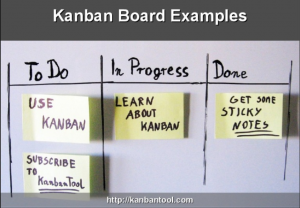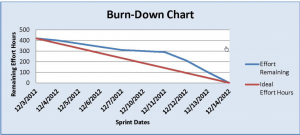Six Easy Ways to Introduce More Agility into Your Organization
By Bill Illis, Project Manager
Search the term “agile” in your web browser, and you will get many articles regarding this subject. Over the last few years, the meaning of the word “agile” has evolved from its origins as a software development process towards a more generally accepted business practice. Recently, the Project Management Institute (PMI) added an Agile Practice Guide into its standards with the 6th Edition of the Project Management Body of Knowledge (PMBOK).This addition to the PMI’s standard for project managers is a testament to the term’s versatility towards change and its applications outside of the technical projects. If you are looking to improve your organization’s flexibility, then taking an agile approach may be a great way to invigorate your existing business models. Here are six easy ways to incorporate agile concepts into your business to maybe help with your next project or possibly your daily operations.
Use an iterative process and get feedback more often
Agile uses iterative methods to complete project work. Using iterations, or sprints as they are commonly called, agile teams create short loops of work that start with planning and end with a retrospective. Each sprint typically lasts between one and four weeks, with a preference to the shorter time frame. When these loops are sequenced together, the result is a continuous, incremental building of a project. By working within a shorter time frame, the process of retrospective feeds the next loop’s planning activities which increases a business’s flexibility to change since each iteration’s priorities are re-evaluated and put into action. One of the pioneers of this concept is Dr. J Edward Deming who created the Plan-Do-Check-Act (PDCA) Cycle. The agile approach uses this quality model in shorter increments which produce faster results, efficiency, and better continuous improvement. If you are looking to improve your organization’s agility, consider adding iterative processes into your operations and projects. It is amazing that once you start looking at things from an iterative frame of mind, you will begin to see cycles everywhere, from your lending processes to your project workload. By building continuous improvement into your business in all areas, you may be surprised at how much more efficient it could become.
Plan to “re-plan”
As best stated by Dwight D. Eisenhower, “Plans are useless, but planning is indispensable.” The typical project usually involves a lot of upfront planning and preparation before work begins. Agile practices adaptive planning, which is one of the pillars of the iterative process. Understanding that variables and assumptions change over time as more information becomes available, planning to re-plan can provide an opportunity to mitigate high-level risks and change direction if needed. If you are using iterations in a project, then planning is built into each cycle as you complete work. Taking your lessons learned and applying them to the next sprint can help you become more adaptive to change, make better decisions, and increase your efficiency. Regularly reviewing existing business practices can also make the same ideas apply to your business operations. Looking at areas of your business with adaptive planning in mind can spruce up ways of doing things, even if those procedures are working today. Sometimes you may find that the working processes you have in place are no longer relevant or may need to be revised to the meet the current environment.
Start using a backlog
If you have not heard of this term before, it is not as foreign as it may sound. A backlog is a prioritized to-do list for a project. In agile teams, the backlog is used to determine what work is to be done first, and can also be used to estimate effort for planning sessions. The backlog’s simplicity is the key to its success. As more information becomes available, it is easy to shift priorities around, adding or removing items as needed. In contrast, if you are using a complicated tracking spreadsheet or maybe a project plan for a new, sophisticated project, it may not be as easy to add or remove items. Continual refinement of your backlog is vital to be able to respond to changing information. This grooming process is usually done during the retrospective period of the sprint. However, it should be done regularly, so the most up to date information is available. Doing this helps ensure that items are adequately prioritized. Additionally, if a task or assignment is not completed during the cycle, avoid the temptation to add it to the top of the backlog. You may find that when a job is not finished, its priority changes or that function may not be needed at all going forward.
Limit your work in progress
It is no secret that in today’s society, technology has helped us become more efficient. However, step into any given meeting on any given day, and you will find people checking email or doing other things during that meeting. Multi-tasking has its uses, but it can also be a distraction. The agile approach tries to eliminate distractions in a few ways, but one is through limiting work in progress. By using a backlog, priorities are established, and during each iteration planning session, the team agrees to a set amount of work before that iteration starts. Once they start executing their plan, no new assignments are given to the team. This helps the team focus on their tasks-at-hand, and they can perform those items without having to stop and reprioritize work each time a new assignment comes into their queue.
Individuals working in teams can also experience the same distractions by taking on too much individual work during an iteration. One way to limit work in progress for individuals on a team is to use a Kanban board. A Kanban board is a visual representation the status of each task and possibly who that work is assigned too. Below is an example of a Kanban board:

Each time an employee completes a job and starts a new one, they move it on the board. Kanban boards are useful for teams to assign work amongst themselves as well as providing real-time updates. How you use one is based on its purpose. Using colors for tasks can represent assignments to individuals, and tailoring columns to fit the needs of your project can help Kanban boards be more useful to your business.
Use timeboxing to invigorate your meetings
If you have not heard of timeboxing, it is the practice of setting a strict time constraint on your meeting or planning session. Doing this has two purposes: it helps you waste less time, and it also helps your meetings become more efficient. One example of this concept is a daily “15-minute stand-up” meeting with your teams. This session is in a round-robin format (yes, you should physically stand) and have each person answer three questions: what did you accomplish yesterday, what are you working on today, and what are the obstacles/barriers that you have. Since this meeting is restricted to only 15 minutes, your teams will provide a few updates, and move on. This session is used to help team members be accountable to one another and also serves as a way to track progress. If during this meeting a significant impediment is brought to your attention, it is not the place to attempt to solve it. Instead, a separate meeting should be held to help that individual overcome his/her issues.
Another example is setting strict limits on your iteration planning and retrospective meetings. A general rule of thumb for these two sessions is one hour of planning and one hour of retrospective for each week of an iteration. Agendas should focus on the activities that are on-hand such as effort estimation, lessons learned, and anything critical that needs to be discussed. Agreeing to rules in advance of the meeting can also help reduce delays and keep your sessions on track. Even if you are not using iterative processes today, timeboxing your existing meetings can help you improve your efficiency.
Use visual “information radiators”
Agile is all about communication and about simplicity. Sharing information goes hand-in-hand with these concepts. Displaying information radiators, such as charts, graphs, and other visual aids in public areas can be very helpful to teams and employees of your organization. They can provide an up to date view of the project, goals or anything you want to share with your groups. While a Kanban board is an example of an information radiator, so is a Burn-Down Chart. During your sprints or iterations, breaking down the remaining items to be completed over the duration of the cycle is a useful tool to show progress. Below is an example of a burn-down chart:

Each day, the actual work completed is compared to the baseline ideal effort and is tracked through the sprint. This can be used during your retrospective meetings to help identify patterns with your team to perform better in future cycles. No matter what information you choose to display within your organization, it is essential to keep in mind that the metrics must be relevant and measurable. Sharing more information helps you make better decisions, and it can also help respond faster to change.
Takeaways
Agile is simple, yet complicated. Its approach is that of continual renewal and building upon existing structures. It is a way to incrementally improve your organization. While it is excellent at helping organizations and teams respond to change, it is also a change itself. An agile approach is not for every situation or company, but if you are able to incorporate one or two of these concepts into your organization, you might find yourself on a journey to continuous improvement. Using iterative processes, you will see that its simplicity and structure can give you efficient ways for dealing with new problems you want to solve, and shortening the time between feedback can improve your organization’s responsiveness to changing environments.
If you are interested in understanding more about agile and its vision/principles, I strongly recommend starting with the Agile Manifesto and the 12 Principles of Agile. These two documents are the foundation of any agile methodology in use today and highlight some of the underlying concepts presented in this article.
Photo credit: Business vector created by rosalerosa – www.freepik.com





